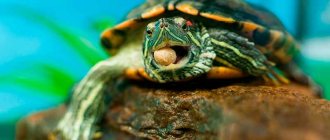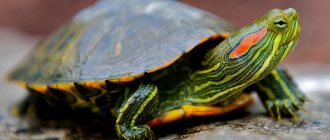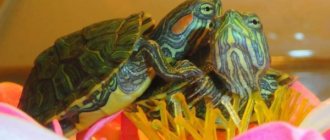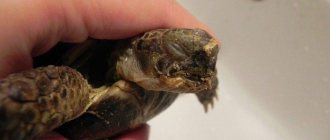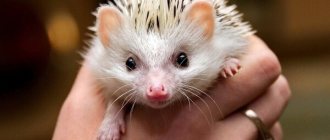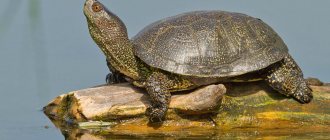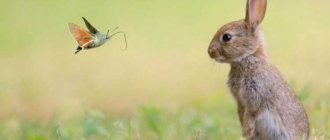Turtles are very cute and easy to keep and care for, making them one of the most popular pets. These creatures steal your heart with their charm and with the right care and environment they can become lifelong friends.
There are many things that are necessary for a healthy and happy turtle tank, including plants.
Turtles prefer live plants because they love to eat them and they also help mimic their natural habitat.
Benefits of Having Live Plants in a Turtle Aquarium
Keeping live plants in a turtle aquarium has several advantages:
Backup filtering
One of the biggest benefits of having live plants in your turtle tank is the ability to filter the water. Living plants can filter out ammonia, nitrates and other organic compounds that are undesirable in the water.
They make the water cleaner, and because they act as a filtration system, they reduce the strain on your aquarium filter.
beauty
Living plants, among which turtles swim, are part of the habitat of these mammals. An aquarium without plants looks unnatural and unattractive to both you and the turtle.
Adding plants to your aquarium will make it look more beautiful and also make it more comfortable for your pet.
Oxygen
Plants release oxygen, and this also happens underwater. Increasing oxygen levels is beneficial for your turtle, especially if you have multiple aquatic pets in your aquarium.
Happy pet
The presence of aquatic plants in a turtle tank will make your pet feel at home.
Turtles eat certain aquatic plants, and if you have them in your tank, they will sometimes eat them and also hide behind them. This makes their maintenance more comfortable and keeps them healthy.
Newbie mistakes
Inexperienced turtle owners make mistakes that can harm the health of their pet:
- trying to feed the reptile on land;
- throwing food into the aquarium;
- abuse treats;
- use one type of feed;
- use additives not intended for reptiles.
Owners of red-eared turtles must understand that this is an aquatic reptile that does not feed on land. The diet should be varied, consisting of animal and plant foods. Baby turtles should be fed as predators, adults as omnivores.
We invite you to join our group on VKontakte or Odnoklassniki, where new articles for pet owners are published.
Disadvantages of Living Plants in a Turtle Tank
Special care of the substrate
Some aquatic plants require substrate for root growth. If you have this type of plant and have substrate in the tank, you will need to vacuum it regularly to remove feces and food debris. Their accumulation in the substrate can pollute the water and cause illness in the turtle. Turtles will also dig up plants for no reason and you will need to clean up the mess.
Toxic plants
Not all aquatic plants are suitable for turtles. Some of them are poisonous if eaten.
What not to feed
Aquatic turtles are omnivores. They can eat almost any food offered to them. But you shouldn't do this. They cannot digest all the food, which will disrupt the functioning of the gastrointestinal tract and lead to illness.
What not to give to turtles:
- food from the table;
- fruits and berries with seeds;
- sea fish;
- river fish of fatty varieties;
- onions, radishes, eggplants (they are spicy for animals);
- citrus peel;
- pork, lamb (too fatty, it is difficult for turtles to digest such meat);
- amber snail meat;
- elodea (contains poisonous juice).
Video on the topic. What can you feed a red-eared turtle?
Flooded Aquatic Plants for Turtle Aquarium
Eleocharis parvula
First on the list of the best live plants for turtle aquariums is Eleocharis parvula. It is similar to regular lawn grass, the only difference is that lawn grass is not in water.
Eleocharis parvulus forms a good layer of substrate for turtles to walk on comfortably as they move around the tank. Turtles can eat some stuff, but the plant isn't so tasty that they'll level an entire field. Plus, it doesn't require much lighting or CO2, plus it doesn't grow as fast, so it won't take up too much space in the tank.
Anubias barteri
These are slow-growing, broad-leaved plants that are an excellent choice for a turtle aquarium. This is one of the easiest aquatic plants to grow and care for. It is also inexpensive and readily available at pet and aquarium supply stores. Anubias plants do very well in low light, don't care at all about pH, and aren't palatable, so fish and turtles leave them alone.
Anacharis or Fishbreeder (Lagarosiphon major)
It is the most common aquatic plant sold for use in aquariums. Sometimes it takes root at the bottom, and sometimes it floats freely. The long stems are covered with dark green leaves that curl back. It is an excellent oxygenator that grows very easily from cuttings and can withstand very low temperatures. The plant provides good nutrition for turtles.
Java Moss
The real beauty of Java Moss is that it doesn't require much lighting or air. It does well in dull and murky water, which means you can keep it in almost any freshwater aquarium. Java moss is also good for water filtration, which is essential in any turtle tank. Java moss is good because it grows along the substrate, stones, driftwood and other objects in the aquarium. This means that it grows easily almost anywhere, so being eaten is not a big problem, and it is also easy to care for.
Thai fern (Java Fern)
Another good option to consider. Although it needs to be secured with small rocks or driftwood, it makes a great addition to any turtle tank. Just tie it to any bottom surface with fishing line and you'll be fine. Ferns are excellent at removing waste from water, acting as a natural filter. They are not that tasty to the turtle, although they may nibble on them from time to time, but they will not eat the whole plant at once. Additionally, low CO2 levels are not a problem for the plant either. This is a very hardy and easy to care for aquatic plant for any freshwater aquarium.
Common holeweed (Moneywort)
Common hole plant is another great option when looking for live plants. It has a beautiful appearance, which makes the turtle tank more attractive and cozy. Grows straight, with long and tall shoots.
In addition to aesthetic appeal, it serves as a treat for turtles. Hollowweed grows well in the presence of plenty of sunlight and CO2.
Hornwort (Ceratophyllum)
Hornwort is a great addition to a turtle tank. It does not reach the surface, but grows underwater, providing filtration and beauty, and can withstand a variety of water conditions as long as they are not extreme. Turtles will happily eat it, but this is not a problem as it grows quickly. It is not demanding and will survive without any effort on your part.
Red Ludwigia (Red Ludwigia)
The reason many people love red ludwigia is that it is very low maintenance. You will not need to provide it with any special nutrients, lighting or aeration. It will do just fine on its own and will feed on the nutrients in the water. Its ease of care makes this plant the best choice for turtle aquariums.
This is a taller plant, so you will need to add a couple of bushes at different ends of the tank to avoid overcrowding the turtles' basking area. It is also a very fast-growing plant that turtles love. Although turtles can eat a lot of red ludwigia, it grows very quickly so it is replenished in no time.
Review of artificial food for aquatic turtles
It is recommended to use dry food not as the main food for aquatic turtles, but as an additional feed that goes well with natural food.
The range of dry food for aquatic turtles includes a large selection of products from different global manufacturers. Let's take a brief overview of the types of artificial food and other healthy treats for pet reptiles.
Complete dry food
Complete dry food can be given to baby and adult turtles every day. This product contains useful components of plant and animal origin, selected taking into account all the requirements of the reptile’s body.
Popular brands:
- Sera;
- "Zooworld";
- Tetra ReptoMin;
- Dajana.
Treats
The “Treats” category includes non-complete foods. They can only be given to adult turtles and no more than once a week.
Popular food treats:
- JBL Tortil;
- Tetra ReptoDelica Snack;
- Sera Raffy Royal;
- Zoomir "Tortilla M" Strong shell, etc.
Vitamin and mineral complexes
At home, turtles cannot receive all the microelements necessary for their body, which they obtain in the natural environment. To ensure that the reptile does not get sick and feels good, it needs to be periodically fed with special vitamin and mineral supplements. You can buy ready-made complexes in pet supply stores.
Vitamin and mineral supplements for turtles:
- MIX – mineral supplement with calcium;
- MIX – general strengthening supplement;
- mineral block "Tortilla";
- Beaphar Turtle Vitamin – vitamin complex;
- FIORY Tarta Vigor – feed additive with vitamins;
- mineral block Ca+D3 “Tortilla M”;
- Sera vitamins;
- Dajana is a mineral stone for aquatic turtles.
Floating plants for turtle tanks
Floating plants are plants that float on the surface of the water and have roots that extend into the water. They can absorb all the nitrates that your turtle tank produces through the nitrogen cycle.
In addition to absorbing all the waste from the tank, they also help reduce unwanted algae.
Limnobium laevigatum or Amazonian frog duckweed
A beautiful plant with broad leaves, it looks beautiful, has a smooth texture and is quite hardy. This is a really good option for a turtle tank, and an ideal floating plant for beginners.
Water Lettuce
Water lettuce is another great option for your turtle tank. These are floating plants resting on the surface of the water. Their lighting needs will definitely be met due to the fact that they are on the surface and therefore will be able to absorb a large amount of UV rays.
Moreover, turtles love to eat lettuce, and it also provides good shelter. This is a fairly hardy plant that will have no problems surviving in a turtle aquarium environment.
Water Hyacinth
Water hyacinth is also a great floating plant option. Except for its appearance, it is very similar to water lettuce. It floats on the surface of the water, so it easily receives air and light. In addition, it is also a very hardy and resilient plant, so keeping it alive is not a problem.
Turtles love to eat water hyacinth, so it makes a tasty snack. It also looks very beautiful, especially when its flowers bloom.
Trionics
The soft-bodied turtle has a long, thin neck and webbed fingers with sharp claws at the ends. The shell does not have hard horny plates, its length is 30-40 centimeters. The top of the shell is brownish-green with yellowish spots; below it has a yellowish color. The turtle's head is small in size with a dark line from the eyes to the neck. Males and females can be distinguished by the length of their tail; males have it longer.
A distinctive feature of this turtle is the presence of a proboscis with nostrils. The turtle weighs no more than four kilograms.
Turtles of this species like to rest during the day, burying themselves in sand or small pebbles; they are active at night. The water level in the aquarium should allow the animal to reach the air without getting out of the sand.
Trionics are predators and must be kept separately from other turtle species. Turtles of this species live for 25 years.
About water filtration
Clean water is a prerequisite for keeping red-eared turtles, naturally, if the owner cares about the health of his charges. The reptiles themselves leave a lot of garbage and bio-waste; they like to pick up suspended matter and eat in the water. Naturally, all this does not allow the water to remain clean and transparent for a long time.
To provide your pet with a suitable aquatic environment, you should equip the aquarium with special external filters. You can purchase any model, regardless of the type and shape of the tank. It is not recommended to use indoor appliances, as they very quickly become clogged with suspended matter and lose their efficiency.
If the filters function properly, the owner can save himself from frequent cleaning of the tank and complete water changes. To maintain ecological balance in an artificial reservoir, you should change the water weekly by 40-50% of the total volume. The tank can be filled with ordinary water, previously settled at room conditions. This is an important point to rid the water of excess chlorine and other harmful elements.
Appearance
The main part of the body of the red-eared turtle is occupied by a dense shell consisting of horny plates. Its upper part is called the carapace, and the lower part is called the plastron. Limbs, a head and a triangular tail peek out from under the shell. In case of danger, turtles can retract their heads and fold their legs compactly so that the predator cannot grab onto the soft tissue.
The size of an adult turtle can vary from 18 to 30 cm and depends on age, sex and subspecies. Females are noticeably larger than males. Growth rates differ at different periods of life: if young turtles can add 7-8 cm per year, then adult turtles grow by no more than 1.5 cm in 12 months until they reach their maximum size.
Juvenile red-eared turtles have a bright green carapace, which becomes olive or brown with yellow stripe patterns as they age. The head is located on a flexible neck, the pattern on its surface consists of green, black and yellow stripes. Just behind the eyes are two almost oval red or yellow spots. The plastron is bright yellow with green spots.
The reptile's limbs are short, the fingers on each of them end in long claws. The membranes between the toes help turtles swim actively.
Currently, scientists distinguish three subspecies of red-eared turtles, which have slight differences in appearance.
Red-eared turtles can be called long-lived. With proper care, reptiles can live 20-25 years, and some specimens can even reach 40 years.
UV lamp
Depending on the age of the turtles, the power of the UV lamp is selected:
- for young individuals – 5% UVB;
- for adults – 10% UVB.
The presence of an ultraviolet lamp is the main condition for the normal development of red-eared turtles. To prevent animals from getting eye burns, the UV lamp should be installed at a level of at least 25 cm and turned on for 10-12 hours, turned off only at night.
Ultraviolet radiation prevents the development of rickets, improves metabolism, and affects the activity of turtles. The rays help absorb calcium, which is necessary for building the shell.
Decoration features
They use massive stones, driftwood, and artificial plants. Experienced aquarists call plastic buildings “kitsch” with an unknown chemical composition, and they avoid placing them.
The decorations also serve as shelters. Young turtles especially need shelters. Decoration with artificial plants is necessary. Red-eared turtles eat natural greenery.
Decorative elements should not have sharp fragments. Animal skin is easily damaged.


